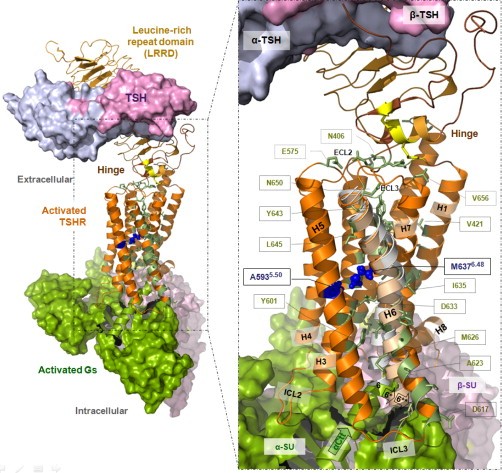THE THYROTROPIN RECEPTOR AND THE REGULATION of THYROCYTE ACTIVITY AND PROLIFERATION
DOI:
https://doi.org/10.64062/Abstract
The thyrotropin receptor (TSHR), a G protein-coupled receptor (GPCR) family member, is the key controller of thyroid gland physiology, translating thyroid-stimulating hormone (TSH) signals into modulation of thyrocyte activity. Upon binding with a ligand, TSHR initiates a set of intracellular signaling pathways, ranging from the conventional cAMP/PKA cascade to non-conventional pathways like PLC, PI3K/AKT, and MAPK, all of which cumulatively orchestrate thyroid hormone production, release, proliferation, differentiation of thyrocytes, and overall glandular homeostasis. This review offers a detailed overview of the molecular structure of TSHR, its expression in thyroidal and extrathyroidal tissues, and its function in physiological and pathological processes. Special attention is given to TSHR dysregulation and its role in a variety of thyroid diseases, such as autoimmune hyperthyroidism (Graves' disease), toxic adenomas, thyroid carcinomas, and congenital hypothyroidism due to receptor mutations. The extrathyroidal expression of TSHR, particularly in orbital fibroblasts and fat tissue, broadens its clinical relevance to diseases like Graves' orbitopathy and metabolic regulation. In addition, the review discusses existing and new therapeutic options focused on the targeting of TSHR and its downstream pathways, emphasizing the receptor's biomarker and drug target potential in precision endocrinology. In spite of advances, substantial gaps persist concerning the roles of non-cAMP signaling and the safety profile of long-term TSHR-targeted interventions. Filling these gaps through multi-disciplinary research is important for creating innovative and personalized therapies to treat and prevent complex thyroid pathologies.




